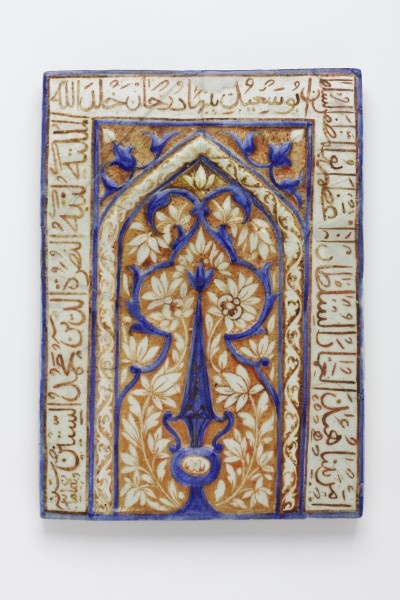Die Fliese in Form einer Mihrab-Nische mit Moscheeampel und umlaufendem Schriftfries nennt den timuridischen Sultan Muzaffar Abu Sa’id Bahadur Chan als Auftraggeber. Sie ist signiert und in das Jahr 1455 datiert. Es haben sich mehrere ganz ähnlich gestaltete Fliesen in dieser eigenwilligen Farbigkeit und mit dem Namen dieses Sultans erhalten. Sie dienten zur Ausgestaltung von Innenräumen. Für welches Gebäude die Fliesen hergestellt wurden, ist unbekannt. (Text: Reingard Neumann)
Wohl Schenkung aus der Sammlung Ph. Walter Schulz, Berlin, vermutlich 1900.
en

